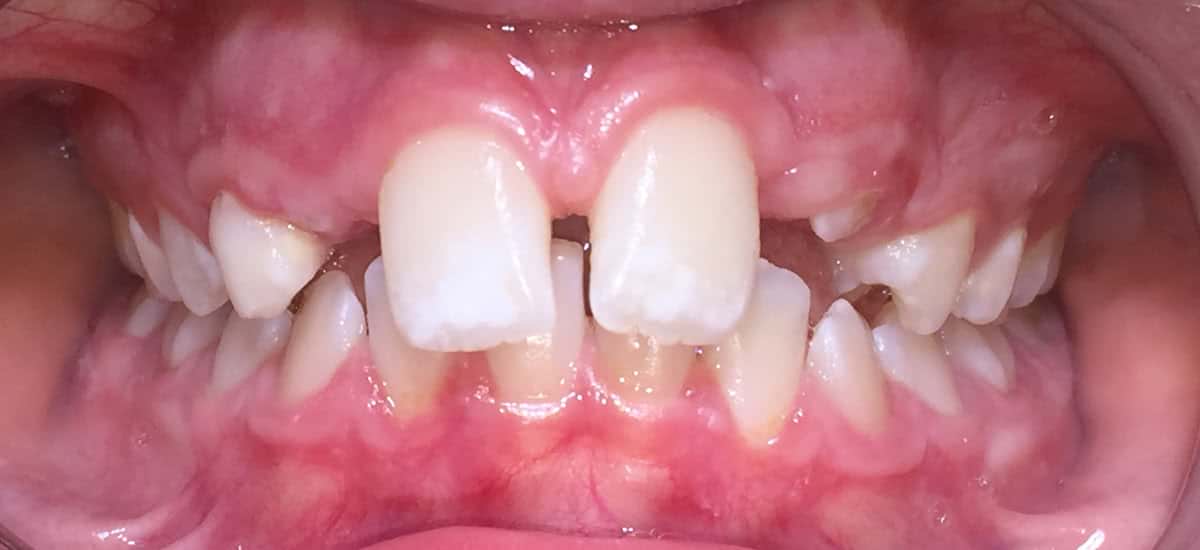Around five percent of people have a tooth congenitally absent. These are most commonly the upper lateral incisors (next to the front teeth), second premolars (number five when counting from the front) and wisdom teeth. Teeth can also be lost through trauma and decay. Having a missing tooth can affect aesthetics as well as the way the teeth and jaws function and the long term health of the remaining teeth. If a tooth is missing the adjacent teeth and the teeth in the opposing jaw will usually tip or move into the space.
Treatment
How the space is managed can depend on a number of factors including:
- How much space or crowding is present.
- If the lateral incisor is missing it is possible to move the eye tooth forwards but the eye teeth can be very thick, very angular and a darker shade which would not be suitable next to the front tooth.
- How much bone is present where the missing tooth should be.
- The condition of the baby tooth if it is still in place.
If the space is to be filled by an implant or bridgework, braces may still be needed to upright and realign the adjacent teeth and ensure the size of the new tooth will match the natural teeth.





